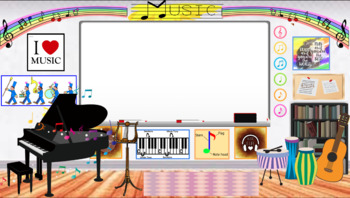

Air conditioning ducts, equipment, and units.There are numerous sources of noise at a school as you can see in the graphic below:Įquipment noise can come from sources like: When determining the decibel level of noise in a typical classroom, we need to take into account inside and outside noise. Woodworking shop (with background noise from power tools) - 78-90 dB.

School kitchen (including background noise from machinery) - 67-80 dB.

Music class with students talking - 68-73 dB.School break bell in the hallway (measured 2 meters away) - 115 dB.2 children arguing over toys - 78-82 dB.11 unruly students doing group work - 60-65 dB.

#CLASSROOM BACKGROUND MUSIC FULL#
A full classroom of children playing or talking at the same time can reach decibel levels up to 95 dBA. The Highest LevelĪs for the highest decibel level of noise in a typical classroom, it can be much higher than you would expect. If we consider this lowest level of noise for a classroom of 35 dBA and the fact that the human voice is between 50 and 70 dBA, this means that the teacher’s voice needs to be at 50 dBA to be heard by the students. reverberation time, and a signal-to-noise ratio of 15 dBA. The ANSI S12.60 standard considers a standard classroom to be less than 10,000 cu ft, with a 0.6 sec. The World Health Organization recommends the same level of 35 decibels (A-weighted) as safe. In the US, the American National Standard for Acoustical Performance Criteria, Design Requirements, and Guidelines for Schools, or ANSI S12.60 for short, requires unoccupied classrooms to have background noise of 35 dBA. So, to answer the question ‘What is the decibel level of the noise in a typical classroom?’, let’s consider the lowest and the highest levels, as well as the average: The Lowest Level Softer rooms have sound-absorbing walls or floors, ceilings, or walls made of or covered in other absorptive materials. An empty classroom will be much quieter than a classroom full of students. There are many elements that contribute to how loud a classroom is.įor one, there is the number of students. What Is the Decibel Level of the Noise in a Typical Classroom?Īs you would expect, the decibel level of noise in a typical classroom is not universal. In this article, we’re taking a closer look at what the decibel level of the noise in a typical classroom is, what the level should be, and what we can do to protect children from dangerous noise levels. And it may lead to study and focusing difficulties, as well as hearing health issues.
#CLASSROOM BACKGROUND MUSIC PRO#


 0 kommentar(er)
0 kommentar(er)
